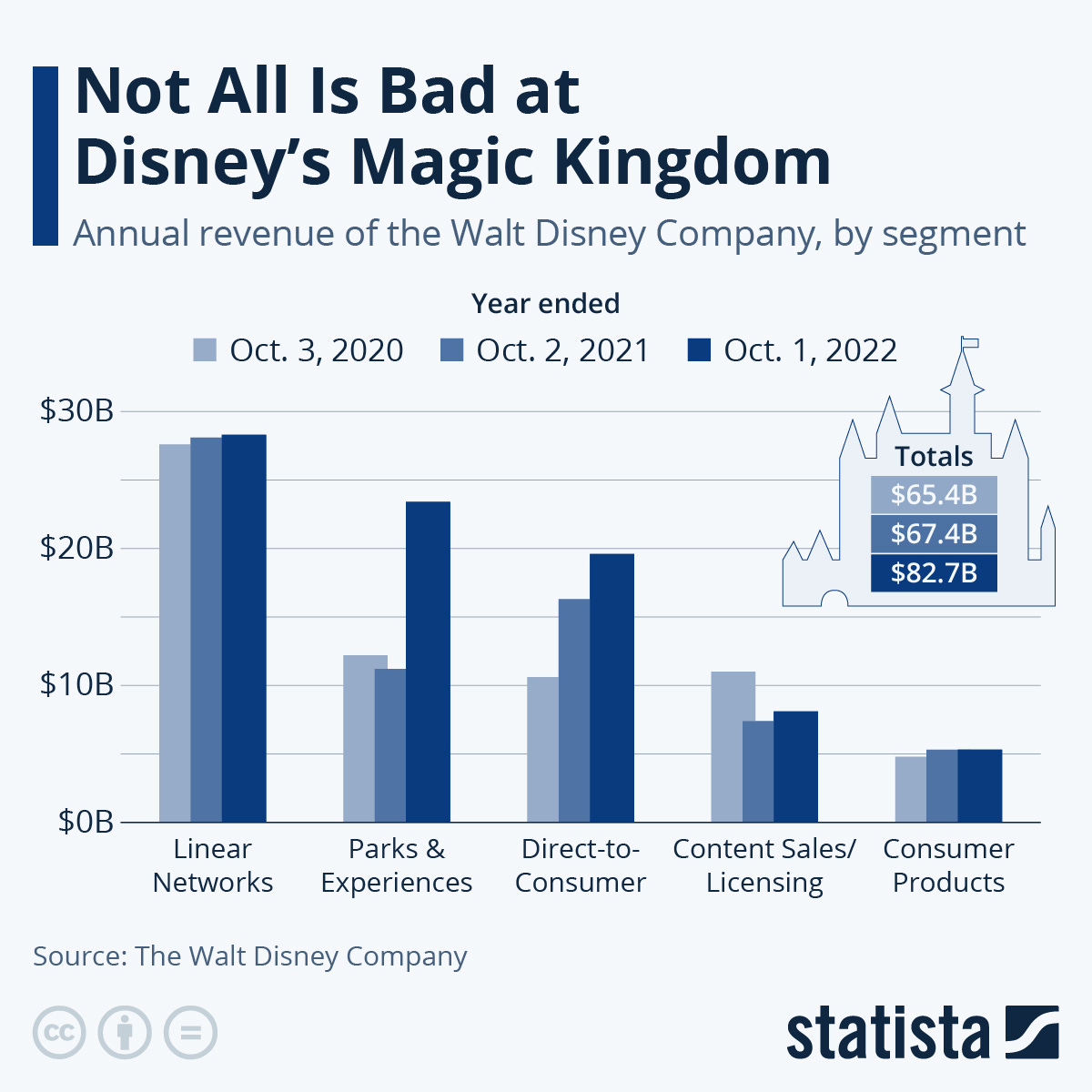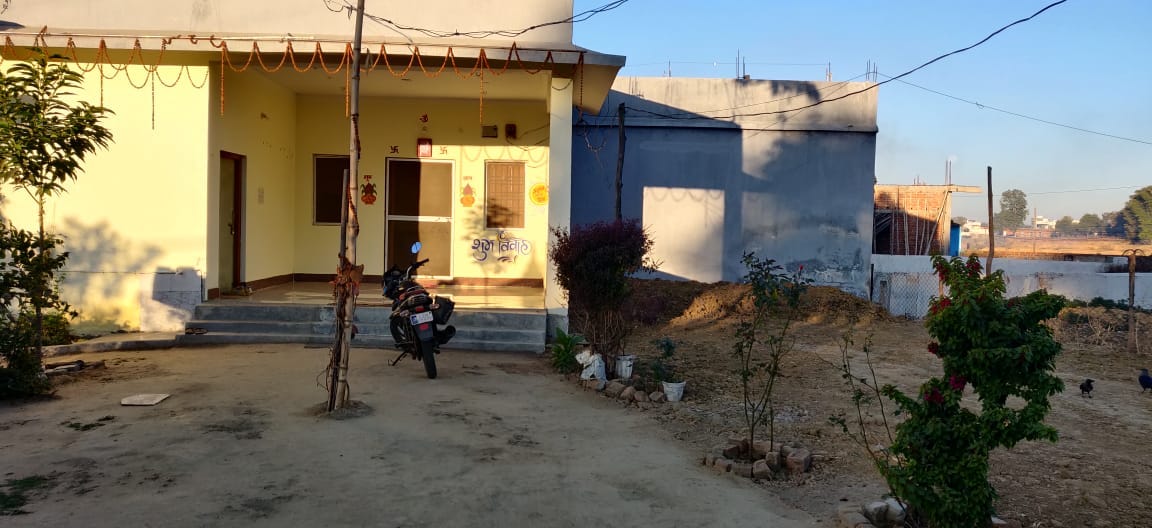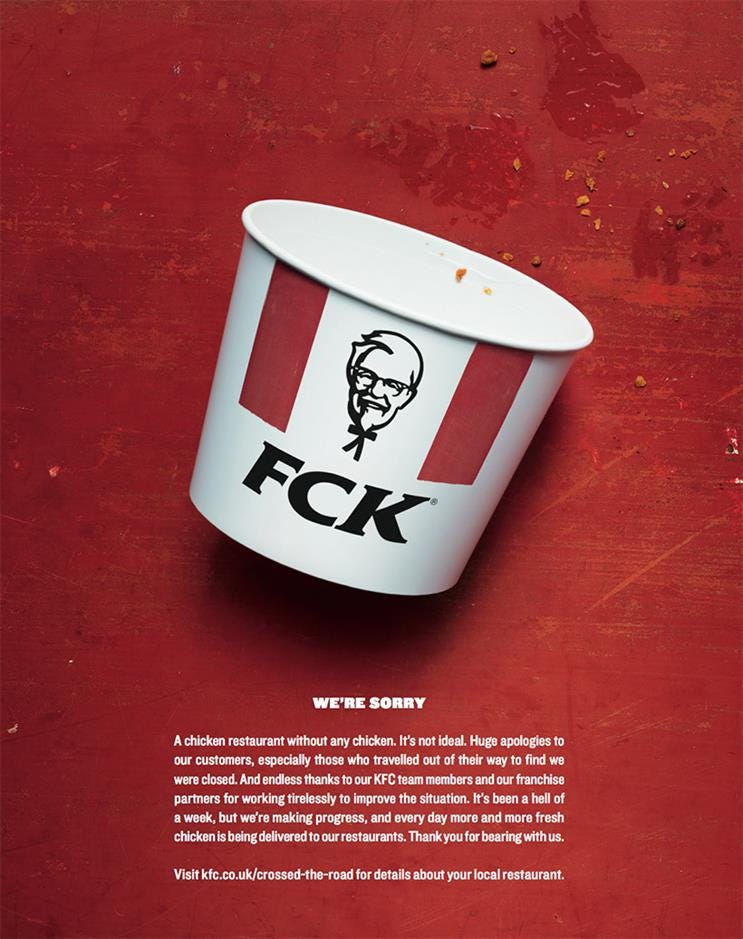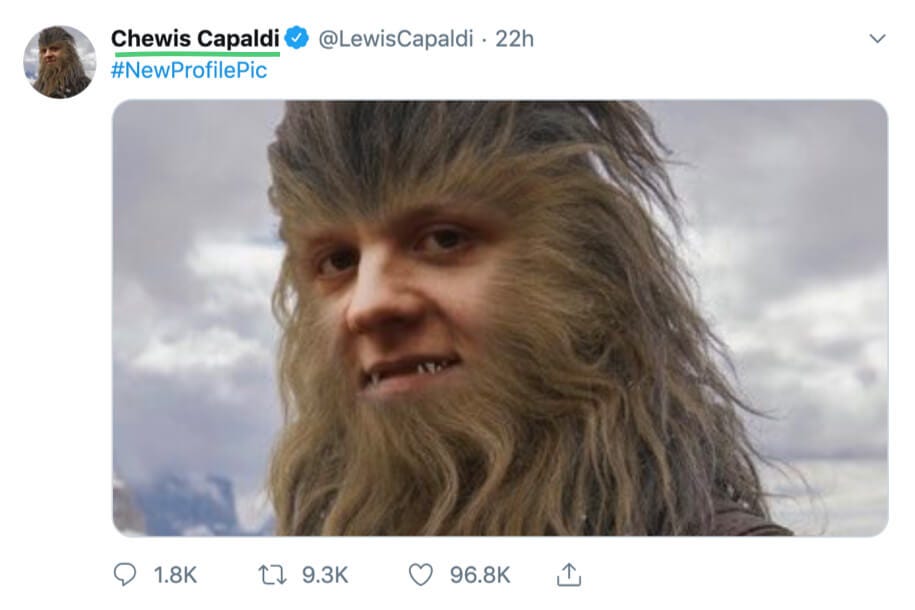Difficulty is what wakes up the genius
What doesn't kill us, makes us stronger. Strength can take the shape of resilience or antifragility. I explore five strategies that make us resilient and, with luck and time, antifragile.
Ideas that help marketers do better so they can be better. Subscribe here. Check out my other essays on marketing here.
“Difficulty is what wakes up the genius” Nassim Nicholas Taleb, Antifragile: Things That Gain from Disorder
We are resilient when we survive stress and continue as before. Taleb says, to be resilient is to be like the Phoenix. It dies but then is reborn from its ashes. Therefore, a company is resilient when it returns to its original state after surviving a massive stressor.
We are antifragile when stress makes us stronger and even better than before. Taleb says that the Hydra demonstrates Antifragility. When one head is cut off, two grow back. A company is antifragile when it grows faster or more profitably (ideally both) after a major stressor.

During the pandemic, it seems everyone was invoking Nassim Taleb and sermonizing about how this Black Swan event was an opportunity for antifragile companies to prosper. The narrative talked up antifragility, and I felt not much was said about resilience.
I think resilience and antifragility go hand-in-hand. Ukraine and its people are resilient and have won the admiration of the whole world. Zelensky however, is antifragile - he started as a comedian and actor, but the uninvited war has forged him into a leader that history will talk up.
Stressors are a necessary ingredient in the moulding of resilient or/and antifragile people and companies. Joseph Campbell’s Hero’s Journey captures how a seemingly insurmountable challenge kickstarts the transformation of ordinary people into antifragile heroes.
Joseph Campbell also says that it takes a village of helpers and mentors to propel us into heroism. Frodo had Sam’s help and Gandalf’s mentorship, Harry Potter had Hermione and Ron’s help and Professor Dumbledore’s wise mentorship.
So I started thinking. And reading. And thinking while clocking my daily 10K steps.
Difficulties stimulate resilience or antifragility. Are resilience and antifragility related?
Can what makes us resilient also make us antifragile?
Given a choice, what’s better?
This is what I came up with.
Are resilience and antifragility related?
I believe resilience and antifragility fall on a continuum. Resilience comes first. Only if we live to fight another day, can we then win. Ukraine as a country can start to become antifragile only after its resilience on the battlefield gets the enemies to retreat.
Resilience could be a period of fighting back, of aggression. Followed by nursing of wounds. Resilience turns into antifragility when we pivot our strategy, business model or context.
Resilience could also be a period of strategic retreat that allows us to hunker down as we wait for our pre-seeded antifragile strategies to play out.
Can what makes us resilient also make us antifragile?
I could come up with five strategies that help us navigate difficulties. Resilience comes first and allows us to live another day. These when played strategically and with some luck, could make us antifragile.
1. Synergistic diversity: e.g. Disney, Amazon
Diversified companies are resilient because losses from one underperforming business are offset by the others.
Even better, companies that enjoy synergies between diverse parts have a better chance at antifragility.
“Bad companies are destroyed by a crisis. Good companies survive a crisis. Great companies are defined by a crisis”. —Andy Grove
Disney is resilient because one business fueled demand for others during the pandemic, but it is (partly) antifragile. When theme parks were shut down, streaming services boomed and this kept Disney’s financials stable. As per Statista, their revenues in the year-ended Sept. 29, 2019, were $69.6 billion. During 2020-2021, what I like to call their period of resilience, their total revenues declined marginally, to $65.5 billion and $67.4 billion. By Sept 2022, theme parks had reopened and revenues were 18.8% higher than pre-pandemic levels, at $82.7 billion.

Disney’s synergies go beyond just financial. I had written about Disney’s flywheel here. Its various businesses (theme parks, IPs, movies, toys, streaming etc.) have been designed to feed each other’s flywheel like oxygen stokes fire. More people watched more content (Marvel, Star Wars, Disney+) during the lockdown and subsequently increased their demand for theme parks, toys and merchandise.
This made them antifragile. But not 100% kryptonite-proof.
I say this because their profitability declined by 64.7%(!) from $11.05 billion in 2019, to $3.19 billion in 2022. This was because Disney overinvested into content creation for their streaming service and expectedly, did not retain the lockdown levels of revenue growth as consumers spent less time at home. While streaming fueled theme parks, reverse synergies did not hold. That’s why, Disney is ‘partly’ antifragile.
Amazon was antifragile during the pandemic. Will online retail continue its growth streak? We know during the pandemic people had to shop online and companies had to digitize. So all Amazon businesses thrived. Q1-Q3 2019-2022 data from Statista shows that revenues soared from $183.4 billion in 2019 to $309.3 billion by 2021. Even the post-pandemic revenues for 2022 of $335.6 billion are a whopping 83% higher than 2019.
Unlike Disney, its gross profit for the twelve months ending September 30, 2022 was $216.2 billion, 88% higher than $114.9 billion in 2019.
When we peel the onion further, we see that Amazon financials benefited from diversity, but it’s complicated. Online retail business forms 50% of Amazon’s revenues, but AWS makes almost all the profit. We also see that sustained antifragility eluded the online retail arm - all business lines continue their upward march into 2022 while online retail remained flat at $155 billion.
Could synergistic flywheels strengthen retail online? Not really. Apart from the ads and online retail business, there are no synergies at the flywheel level. Here too, the online retail business fires ads, and not vice versa.
Amazon’s antifragility was the result of a crisis that seemed to have been tailormade for its lines of business. Now that everyone is back in office and back to stores, the continued growth of online retail business is dependent on online shopping penetration.
And online shopping penetration seems to be reverting to pre-pandemic levels. Let's look at the US, which makes up 60% of Amazon’s revenues. As per Statista, penetration of online shopping amongst internet population in the US remained flat at ~74% between 2021 and 2022. It is expected to remain at the same level in 2023 also as shopping habits revert to baseline.
Amazon can deliver those running shoes the very same day, but even it can’t dictate where consumers choose to shop!
2. Crossing the chasm of comfortable complacency: e.g. Chanakya, Netflix, Microsoft
Small discomforts compound our strength. If we subject ourselves to small stresses periodically, we are better equipped for crisis time.
Chanakya: for my non-Indian friends, Chanakya was (sort of) like India’s Machiavelli. He was a key advisor and protector of Chandragupta Maurya. That someone from their inner circle might try to poison the king was a very real possibility. So, since the time Chandragupta was a child, Chanakya gave him small portions of poison. This made him immune and when someone did try to poison him, he survived. This was resilience. The poisoning itself did not propel him into antifragility. But because he survived, he lived out his destiny to start uniting India and is known to be one of our great kings.
Netflix: Netflix engineers invented Chaos Monkey, a tool that randomly attacks its systems to check how efficiently the remaining systems can continue to function without impacting consumer experience. This self-inflicted stressor ensures its IT infrastructure stays resilient.
Microsoft: Ravi Venkatesan, in his excellent book, What The Heck Do I Do With My Life? talks about how being pushed to do roles that were far beyond his ability shaped him into CEO material. He believes that cookie-cutter management trainee programs do not stretch us. Instead, he promotes the idea of Hot Jobs-Hot Talent. He says that at Microsoft, the most difficult problems were given to top talent, under the mentorship of senior leaders. This killed two birds with one stone. Not only were the toughest problems solved, but it put new talent through a hero’s journey. When they look back, they know these crucibles made them better professionals and humans.
3. Change in context: e.g. my friend A
Not every war needs to be fought. Strategic pivots can make us resilient, which if sustained, can take us into antifragility.
My friend A pivoted his context to become antifragile. A was stuck in Bombay during Covid. He was trying to make it as a corporate trainer and coach. But business dried up. When he had no money left to pay rent, he decided to move back to his village - Baikunthpur in Chattisgarh - 36 hours transit time from Bombay. Since there was no market for coaching there, he started taking tuitions. Tuitions led to a teaching job in the local school. He feels he has finally found his purpose - to mould young minds. He is now thinking of starting a school and online classes. Antifragility was not an overnight phenomenon. He had to go through a stomach-churning identity crisis and sleepless nights. Only then he was reborn, on a much stronger footing.
4. Tradeoffs: e.g. Kraft Heinz, iPhone
When we invest in building our defenses for the future, we are inefficient in the short term. Acceptance of these inefficiencies is key in our quest to be stress-proof.
Sustained investment in brand building makes brands resilient: We forget that growth comes from a combination of long-term brand building and short-term sales conversion. When growth is challenged, businesses start moving money away from brand building into short-term sales conversion. If we take a short-term view that branding is a ‘cost’, we make our brands fragile.
A recent example of this myopic trade-off is of 3G Capital owned Kraft Heinz. 3G Capital is notorious for cutting brand investments to the bone. This has weakened their brands and they have had to write-down their intangible assets (brand equity) by $15 billion in Feb 2019.
No brand is immune to the consequences of the wrong trade-offs. This analysis by The Ehrenberg-Bass Institute shows that when brand building investments are reduced, all brands decline over time. Bigger brands might be resilient in the short-term because of scale, but even they become fragile over time.

A key feature of an antifragile brand is the ability to charge a premium. Antifragile brands enjoy such sticky equity, that their consumers become price inelastic. We all want to own the latest model of phone, so let’s compare price of the latest iPhone model. The original iPhone was launched in 2007 for $499. Which is $714.31, after adjusting for 2022 inflation (USA). The iPhone 14 launched in 2022, starts at $799. In real terms, a new iPhone model is $85 more expensive today. And we continue to queue up for each new launch. Now that’s antifragile.
5. Strong egos held lightly: e.g. KFC, Lewis Capaldi
If we take ourselves less seriously, we can navigate stressors easier and with a sense of humour. With a bit of luck, it might make us better off than before.
A fried chicken brand admitting they ran out of chicken: There was a shortage of chicken in the UK and KFC had to close all 700 of its restaurants. The ‘corporate’ response would be a mind-numbing arse-covering apology slathered in legalese. Instead, KFC took out a full-page ad showing an empty bucket, and the letters of their logo rearranged to read “FCK”. They did not take themselves seriously and in making light of the situation, they invited empathy and a chuckle.
Lewis Capaldi holds his ego lightly. The Oasis star Noel Gallagher decided to take potshots at Lewis Capaldi, an upcoming music star: Music is f*****g w**k at the moment. Whose this Capaldi fella? Who the f****s that idiot! The next time Capaldi performed, he walked out to the video of Noel Gallagher’s criticism, dressed like Gallagher, and also dedicated his performance to him! This went viral and won him lots of new fans.
It’s not over yet. Gallagher responded by calling Capaldi, F***ing Chewbacca. In response, Capaldi changed his Twitter photo to Chewbacca and his name to Chewis Capaldi.
Gallagher's insults would have damaged Capaldi, had he not worn them as a badge of honour. The more you messed with him the stronger he got. His fans loved him even more because of this.
In times of stress, what is better? To be resilient? Or to be antifragile?
Control the controllable. We can control how resilient we are. Beyond a point, antifragility is a consequence of uncontrollable factors. We all wish to be antifragile. However, I think antifragility has a high bar. While resilience is dependent on our response (a controllable factor), antifragility depends on several uncontrollable factors e.g. luck, timing, consumer behavior.
As the conversation between the wise Oogway and Master Shifu in Kung Fu Panda goes.
Oogway: My old friend, the panda will never fulfill his destiny, nor you yours, until you let go of the illusion of control.
Master Shifu: Illusion?
Oogway: Look at this tree Shifu. I cannot make it blossom when it suits me. Not make it bear fruit before it's time.
Master Shifu: But there are things we can control. I can control where the fruit will fall. I can control where to plant the seed. That is no illusion Master.
Oogway: Ah yes. But no matter what you do, that seed will grow to be a peach tree. You may wish for an apple or an orange but you will get a peach.
Master Shifu: But a peach cannot defeat Tai Lung.
Oogway: May be it can. If you are willing to guide it, to nurture it, to believe in it.
Master Shifu: But how? How? I need your help. Master.
Oogway: No. You just need to believe
Speaking of belief. It’s personal.
Alexei Navalny, the Russian opposition leader was poisoned by Putin’s men. He recovered, escaped to the US, and after he got better he returned to Russia! Only to be arrested and placed into solitary confinement. Why did Navalny come back despite fully knowing the fate that awaited him?!
Aung San Suu Kyi has spent 15 out of the last 21 years under house arrest. In Oct 2022, she was again sentenced to 33 years on trumped-up charges by the military junta. She will most likely end her days in prison. Why does she not give up her quest for democracy and choose a more comfortable life?
Sometimes resilience alone, a non-violent staying in place, signals to aggressors that we are down, but not out.
Sometimes winning is about not stooping to the games aggressors play, but rising to our level of resilience.
Resources:
If you'd like to learn more about antifragility, the concept was developed by the great Nassim Taleb and his book, Antifragile, is the place to start.
In his book The Hero with a Thousand Faces (1949), Campbell summarizes the narrative pattern of the monomyth as follows:
This is a great read. Ravi Venkatesan’s book, What The Heck Do I Do With My Life?











Loved this piece